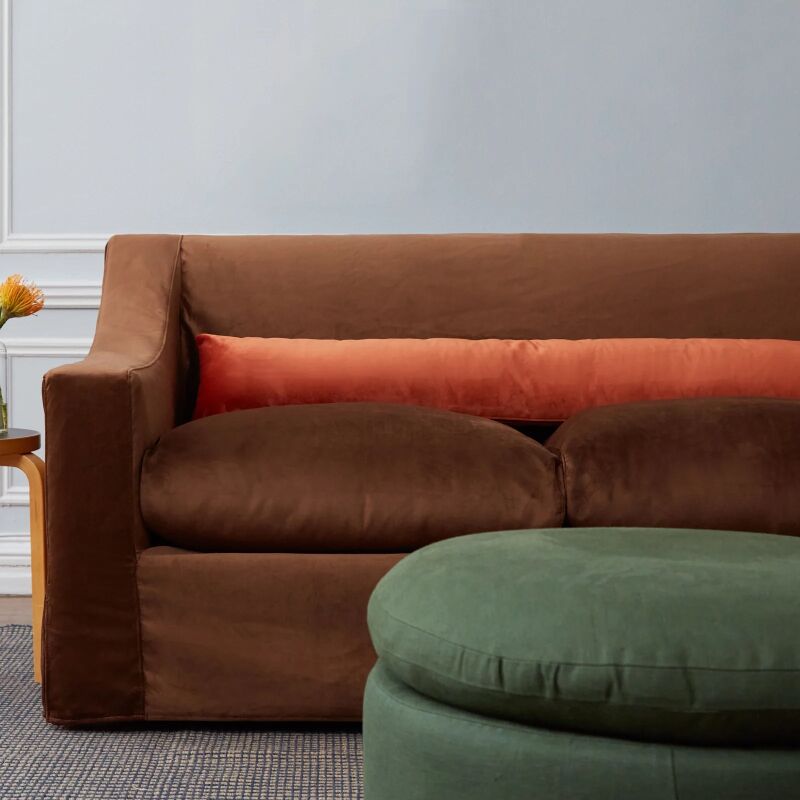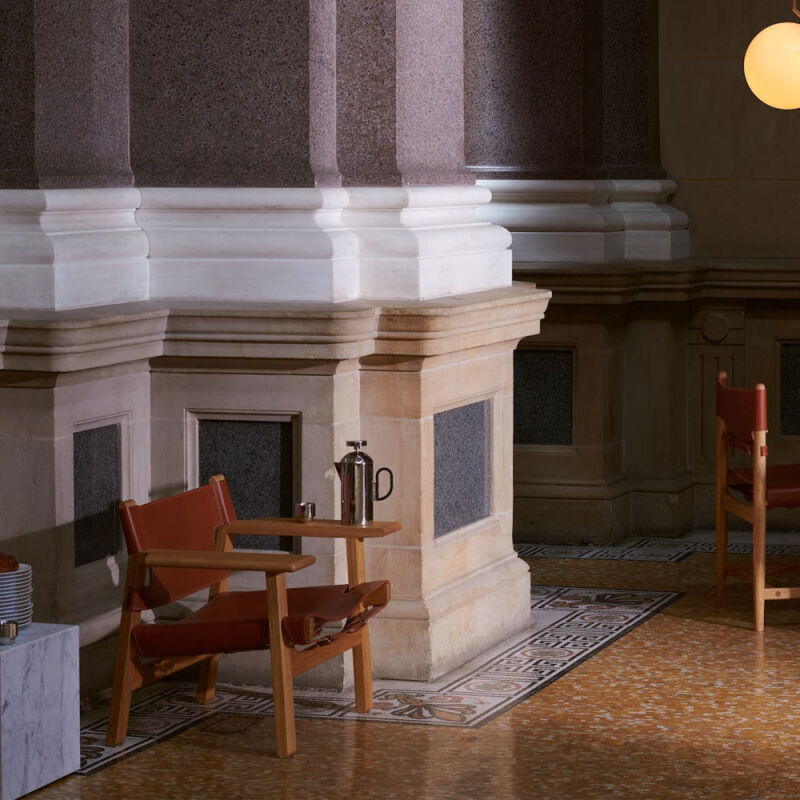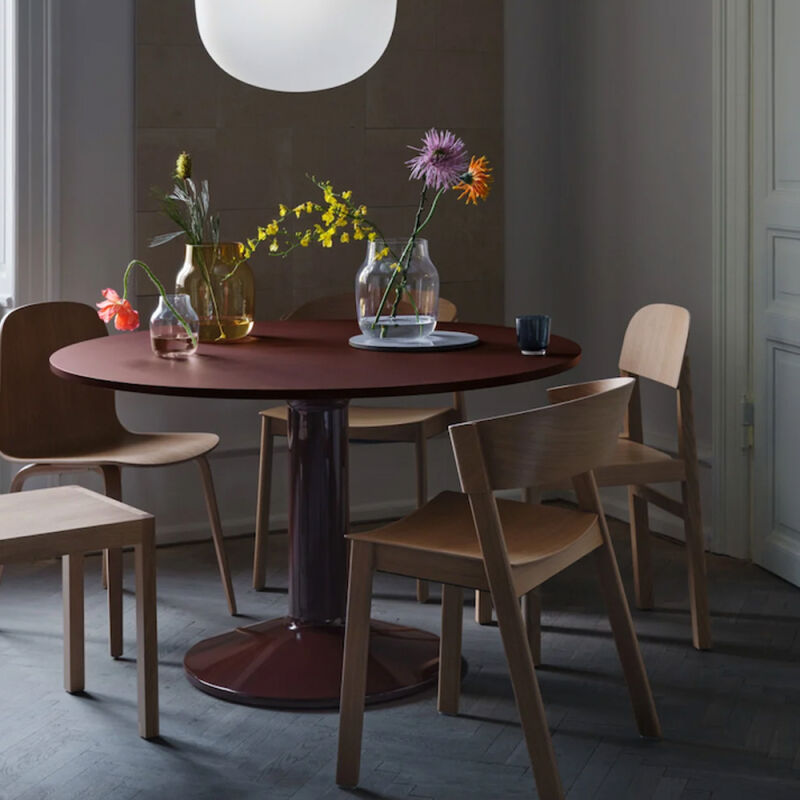The perennially dapper Lee Stanton is a longtime collector and purveyor of British and European antiques. After years in the business dealing with furniture care products that he was hesitant to recommend to customers, Stanton decided to create his own line, CircaCare. As he tells us, “I feel these safer products are a major accomplishment in my career. Now my clients can properly maintain their cherished items.” The vitamin-enriched products, which include cleaning serums, polishing creams, and protective balms, use only natural, nontoxic ingredients. Here, he shares his advice on how best to maintain wooden furniture, antique and otherwise.
Photography by Jessica Comingore for Remodelista, except where noted.

Above: Lee Stanton at his eponymous showroom on La Cienega Boulevard in LA. Photograph via Lee Stanton.
RM: What basic care do you recommend for wooden furniture?
LS: Dust furniture frequently with a soft cloth, and rub the surface often to encourage a hard skin and good patina to form. From a day-to-day housecleaning perspective, be careful which polishes you choose. Use a good-quality polish, such as my own CircaCare Conditioning Creme and Conditioning Serum. And avoid silicone-based sprays; although they give a good initial effect, they leave a film that is very hard to remove.

Above: An inlaid mahogany octagonal table with ebonized molding and an iron base at Lee Stanton.
RM: Anything to avoid?
LS: Avoid sprays with a large proportion of alcohol; it evaporates quickly, taking with it some of the natural oils in the wood. On the other hand, you also have to be careful of oil-based polishes; they attract dirt and some might darken the wood. And avoid feather dusters–they can scratch the surface.
RM: Preferred cleaning materials?
LS: Use a soft cloth made of terry or microfiber and clean intricate areas with a soft brush (a hard brush can scratch and damage patina). If you use a polish, apply it to the cloth rather than directly to the surface. Be careful not to catch or pull any decoration that could bend or come off.

Above: The showroom is set up as a living room. Photograph via Lee Stanton.
RM: How best to maintain furniture?
LS: The best way to protect the finish of your furniture is to polish it at least once a year (twice a year for pieces that get a lot of use) with a good-quality wax, such as CircaCare polishing Balm or CircaCare Paste Wax. For those on a budget, Goddard’s is a good hardware store staple. Select a polish appropriate for the color of wood. The wax should be applied sparingly with a soft cloth, followed by a polishing with another lint-free cloth. The polish should be left on the furniture for the longest time recommended by the product you’re using (an hour to overnight) to allow it to fully nourish the wood. Then rub deeply in the direction of the grain. A good shine comes from rubbing rather than lots of layers of wax.

Above: Lee Stanton’s CircaCare line. (We initially mistook it for beauty products.)
RM: Other things to consider?
LS: The temperature in your house can greatly affect the condition of your furniture. Try to keep your pieces in a stable environment in which the temperature and relative humidity don’t fluctuate dramatically. Avoid extremes: Very dry conditions can cause furniture to dry out and make wood shrink; very damp conditions can cause mold growth. The ideal humidity level for any piece of furniture is fifty to fifty-five percent.
RM: Humidifiers?
LS: Outside the ideal range, consider the use of humidifiers or dehumidifiers that will help maintain a constant level of relative humidity during the winter heating season and preserve your pieces. Prevention is always better than cure, and it’s possible to safeguard good furniture from dry air damage. A simple alternative, but much less efficient, is an old-fashioned hang-on humidifier, or even setting out a bowl of water.

Above: A polished walnut armoire from Italy, circa 1860.
RM: Common mistakes?
LS: Furniture should be positioned at least two feet from any heat source. Heating sources may cause shrinkage, loosen joints, and warp veneers. If the furniture has to be near a heat source, some sort of protection should be put in place, such as an insulated or reflective barrier.
Many fine pieces of furniture that have survived for centuries in unheated conditions have suffered major harm from just one or two winters of central heating. The reason for this is that antique and fine handmade furniture is constructed from air-dried timber and has far higher water content than mass-produced modern furniture, which is usually made of kiln-dried wood. When subjected to low levels of relative humidity, air-dried wood gradually gives up moisture and starts to shrink and split along the grain. This is aggravated when underlying pieces of wood used in the construction are laid at right angles to each other and then veneered on top. The carcass wood moves and the veneer consequently tears and lifts and pieces may become detached. (If this should happen, make sure these lost pieces are kept for restoration.) Other typical dry-air problems include cracked and loosened joints (in places where glues dry out), sticky drawers, and warped doors that no longer close properly.
RM: What about sun damage?
LS: Monitor the amount of sunlight that reaches furniture. A degree of light over a long period can mellow the color attractively, but too much direct sunlight will dry it out, perish the surface polish, and can lead to uneven fading. Where possible, turn pieces of furniture around occasionally to even the fading process and keep curtains drawn on sunny days when rooms are not in use.

Above: My own water-stained kitchen table in need of help. Photograph by Sarah Lonsdale.
RM: A couple of self-serving questions: I picked up a round Danish table in a yard sale. I’m not sure what kind of wood it is, but it came with plenty of water stains. Any recommendations on how to spiff it up? Also, Julie bought a new Belgian oak dining table that now has grease marks on it. Any suggestions for how to remove those?
LS: I would use a mild wood cleaner, such as a cleaning serum, for the water stains. If the marks are deep, you can try a ring remover and perhaps the finest steel wool. Also a wood enhancer, such as the CircaCare Conditioning Serum and a conditioning cream or one of the CircaCare Enhancing Serums, helps to blend or add color. Julie should try a wood cleaner like the CircaCare Cleaning Serum. Be sure to apply it over the whole surface.
Go to Lee Stanton for more on CircaCare and to see the latest furniture finds at his showroom at 769 N. La Cienega Boulevard, in LA.
Looking for more expert advice? For wood floor maintenance, see our post on The Ins and Outs of Wood Floors. For general house maintenance, see Handywoman Kheli Mason’s Tips.
Frequently asked questions
What can I use to clean my wood furniture?
You can use warm water and a mild soap to clean your wood furniture. Avoid using abrasive materials like steel wool or scouring pads as they can scratch the surface. Always dry the furniture thoroughly after cleaning it.
How often should I oil my wood furniture?
You should oil your wood furniture once or twice a year depending on the climate and how much the furniture is used. Dry climates may require more frequent oiling, while furniture that is used frequently may need to be oiled more often to keep it moisturized.
What kind of oil should I use on my wood furniture?
You can use mineral oil or linseed oil to oil your wood furniture. Avoid using vegetable oil or olive oil as they can leave a sticky residue behind. Always test the oil on a small, inconspicuous area before applying it to the entire piece of furniture.
How can I remove water stains from my wood furniture?
You can remove water stains from your wood furniture by mixing equal parts of baking soda and non-gel toothpaste and applying it to the stain. Let it sit for a few minutes and then wipe it off with a damp cloth. You can also use a hairdryer on low heat to dry out the water stain.
Can I use furniture polish on my wood furniture?
You can use furniture polish on your wood furniture, but be sure to choose a high-quality polish that does not contain silicone or wax. These ingredients can build up on the surface of the furniture and attract dust and dirt. Apply the polish using a soft cloth, and buff it out afterwards to create a smooth, even finish.






Have a Question or Comment About This Post?
Join the conversation